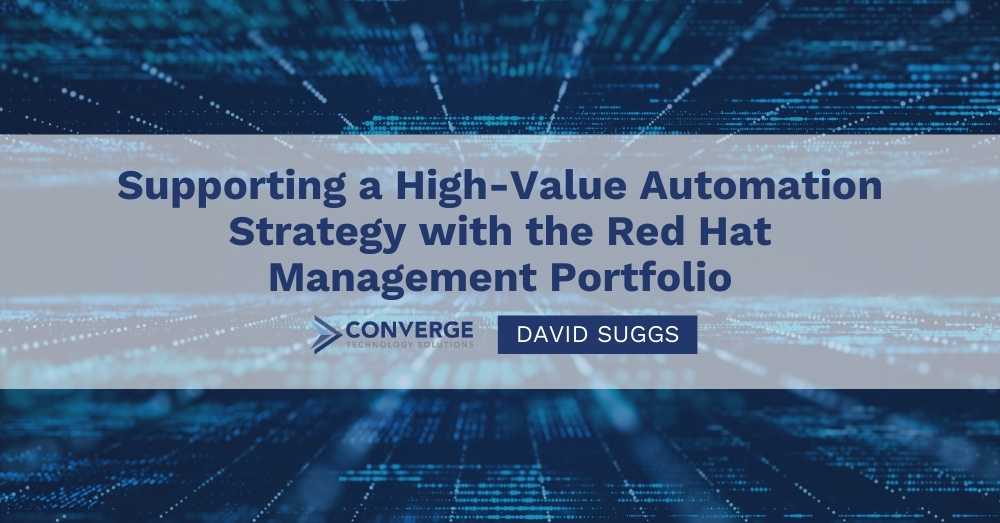For today’s businesses, competition is everywhere. How effectively an organization’s IT infrastructure supports its business strategy and core operations is a crucial factor in its success. Maintaining a competitive edge means enabling speed to market, agility, and innovation to continually improve business value. Often, it requires the ability to deliver results faster through self-service provisioning across hybrid environments.
It’s no wonder that more and more businesses are investing in automation platforms, like the Ansible Automation Platform, to bring more efficiency to their IT infrastructure operations. Ansible is part of the Red Hat Management portfolio, which is designed to enhance value proposition by eliminating manual work, completing routine tasks much faster, and reducing IT costs along the way.
As a combination of Red Hat products, the Red Hat Management Portfolio is designed to solve common use cases. It includes:
- Ansible Automation Platform for building and deploying playbooks for routine tasks that different lines-of-business must do on a manual basis, such as patching servers.
- Red Hat Insights enables companies to identify different threats in their Red Hat environment and provides quick notifications for bugs, threats, and fixes.
- Red Hat Smart Management provides a single “pane of glass” view to manage a company’s Red Hat Enterprise Linux systems and push out patches.
Individually, each of these tools can add value to you or your customers’ existing IT investments, but when it comes to supporting the most use cases, the advantage is realized when the products are used to complement each other. For example, you can build the automation playbook in Ansible Automation Platform to call on Red Hat Smart Management to patch specific host groups.
With automation, these tools speed up common admin tasks so employees can spend time on higher-value or more mission-critical work. Investing in the Red Hat Management Portfolio is a “time = money” investment. These tools save time, and time is money.
Find the right automation path by focusing on use cases
While there are many value-adding tools in the Ansible ecosystem, the important thing is to find the right combination that supports your unique business needs, investment strategy, and automation journey.
Most companies that have data centers are already having automation conversations. That includes small businesses early in the process and larger enterprises with full-scale automation in your IT environment.
A good place to start is focusing on your most important use cases for automation that will provide the most business value. The patching example we described earlier is a common use case made efficient with the Red Hat Management Portfolio, but there are many others. Consider the HR hiring process – every time a company hires an employee, many new usernames and passwords need to be spun up for the new hire (CRM, for example, or for the employee’s assigned devices). With Ansible Automation, you can automate this task instead of having a team member manually do the work of creating all those new logins.
Working with Converge: Start off with automation quick wins
When Converge works with clients, we meet them where they are in their journey. For example, if your business is just getting started with automation, we would educate your workforce with an Ansible Automation Quick Start session following one of our hands-on Ansible workshops. We have found that using a combination of a hands-on workshop followed by the Converge Quick Start program for Ansible Automation yields the best outcomes. We then go deeper with your technical teams on specific Ansible Tower topics, such as role-based access control, Active Directory integration, the configuration of Ansible Tower, and deployment in your environment.
Throughout the process, we work with our clients to identify automation use cases that are important to their respective organization. These are use cases that can be acted on to achieve quick wins and early value from initial interest and investments. From there, more additional use cases can be acted on to build on them.
When selecting use cases, the most important ones to think about are the tasks that keep your team up at night. What are the routine tasks your team is doing manually that take up way too much time? Once we understand your biggest challenges, we then look for a way to build playbooks to automate these tasks, freeing up your team for higher-value work.
The next step toward automation
At Converge, we deliver end-to-end automation solutions for our clients – that stretches from strategy and analysis to procurement and deployment. We work with you to find the best combination of automation tools to bring you the most value and ROI for the investment you feel comfortable making. We’re ready to start an energized conversation on solving your biggest IT challenges with automation. Let’s get going.





